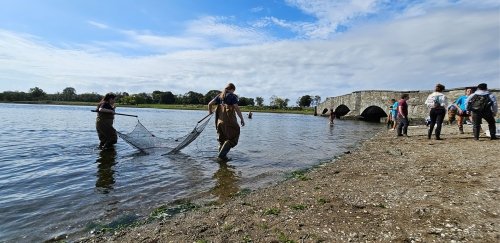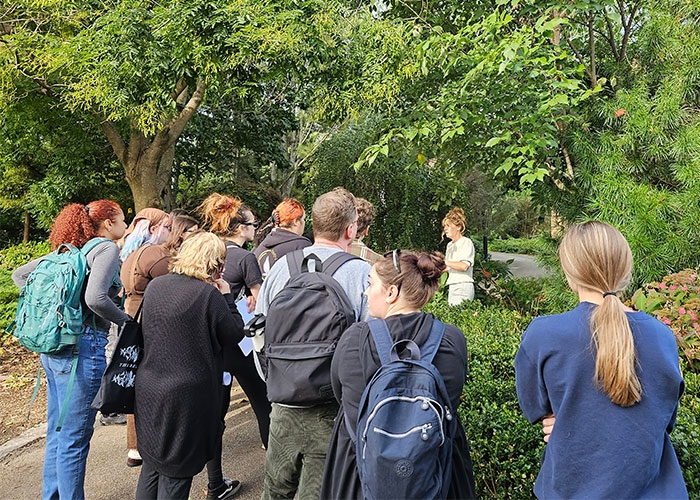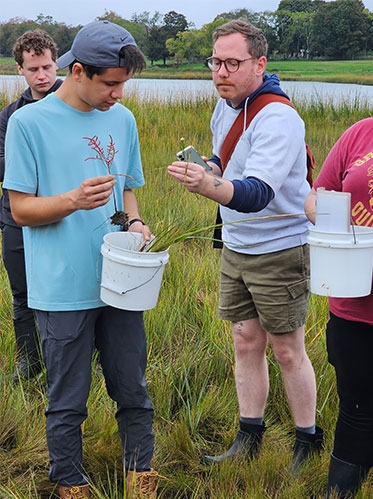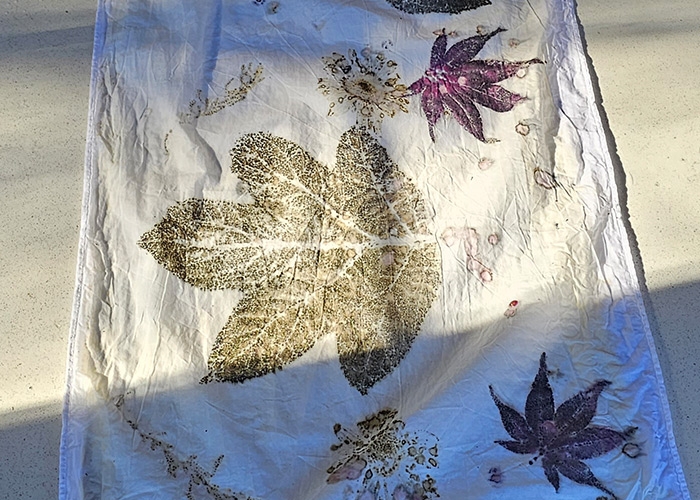Engaged Learning in the Classroom and Community
- News & Events
- News
- Engaged Learning in the Classroom and Community

My students explored applications of ethnobotany through engaged and experiential learning.
Botanists are scientists who study plants. Ethnobotanists study plants of a specific region, focusing on the cultural meanings and traditional uses of plants.
For a semester, my students delved deep into ethnobotany, taking field trips and engaging in hands-on learning thanks to funding provided by the RIC Foundation, facilitated by RIC Interim Provost and Vice President of Academic Affairs Carolyn Masters and Assistant to the Provost of Academic Affairs Alexis Rogel.

My students toured the Roger Williams Botanical Center with Director Lee Ann Freitas, where they learned how to identify plants indigenous to Rhode Island and from around the world. After identifying key characteristics of the plants they were studying, they researched the plants’ ethnobotanic uses in food, medicine, material culture, etc.

Led by Chris Dodge of Save the Bay, they learned about the physical and biological aspects of a salt marsh at Colt State Park. After the field trip, they organized the information they gained during the field trip and fleshed out the ethnobotanical significance of the salt marsh plants, creating a guide to the marsh. This guide will be shared with Save the Bay for use in future programs.
My students also traveled to my dye studio, where they learned multiple ways to extract and use plant dyes. First, they learned about anthotyping. Paper was pre-treated with paprika or turmeric, objects were laid on top of the paper and then set in the sun. In about an hour, the sun destroyed the pigment, creating a photographic image.

My students learned how to make botanical prints and how to transfer images of plants directly onto fabric. They learned about mordants (chemicals that help dyes affix to fabric or paper) and tried a variety of plants and methods to see what kinds of images they could make. They learned how to extract dyes for use in painting and for other uses and how to change the Ph of dyes or introduce iron and tannin to alter color.
Perhaps their most significant experience involved developing an inventory of over 300 plants housed in the RIC Leslie Cameron Greenhouse and writing plant fact sheets for each plant. Greenhouse Manager Pam Hill was so helpful; my students were thankful for her assistance and enthusiasm. The fact sheets and hands-on activities will be uploaded to a Web page for the greenhouse and can also be used for class visits.
Experiential learning like this connects the knowledge students learn in the classroom to real-world situations. My students developed a true sense of community and their understanding of ethnobotany became deeper, more meaningful and engaging through experiential learning. We had so much fun!
